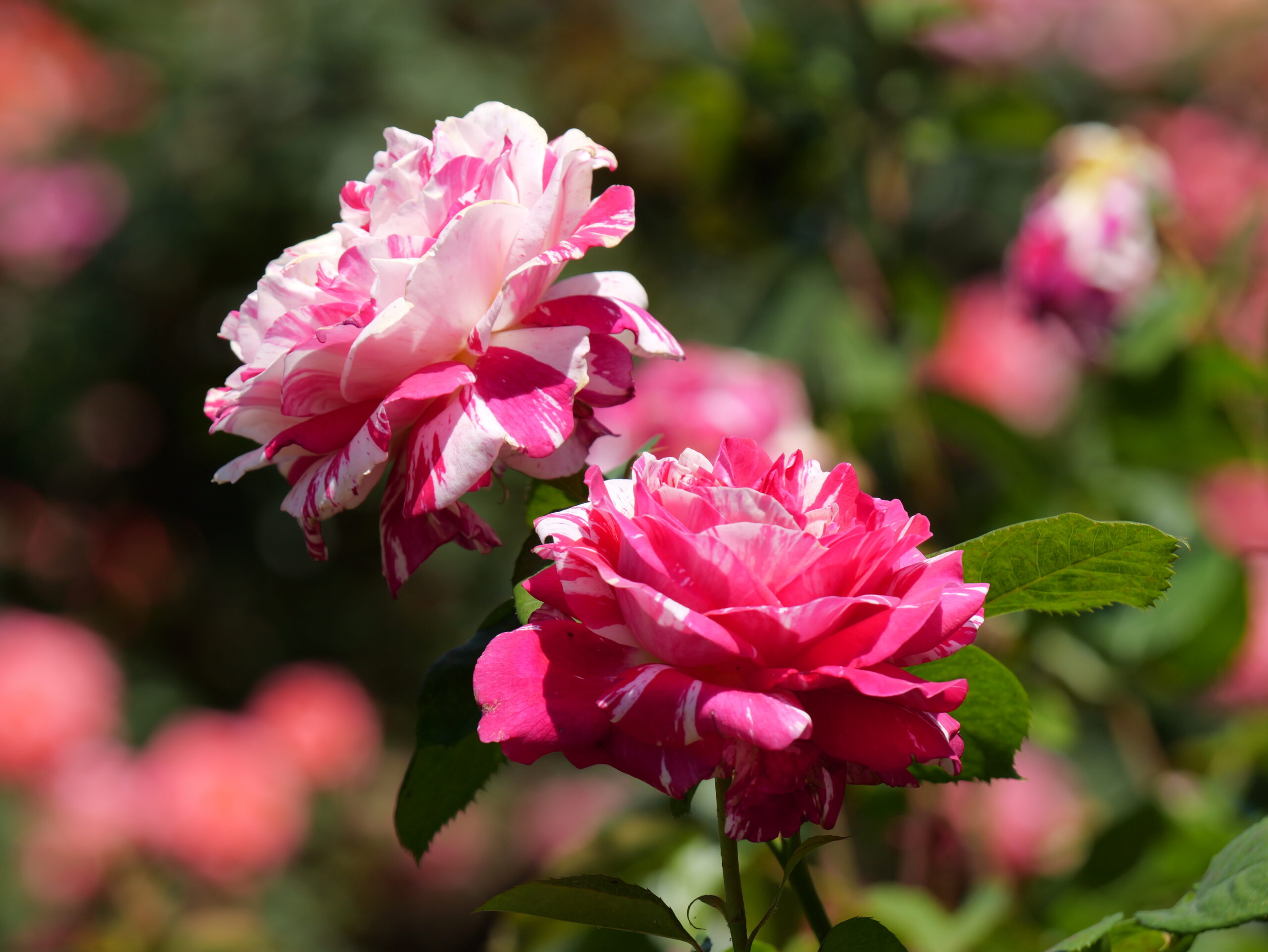
When the first seedlings were planted in what was then known as the “Life Sciences Experimental Area,” the UCR Botanic Gardens was 37 acres of untamed hillside. Today, the garden’s 40 acres are home to geographical collections of plants from South Africa to Australia, more than 300 varieties of roses, and more. As the Gardens celebrate their 60th anniversary, there are many milestones to look back on, as well as plans for the future.
While the official founding date for the Gardens is 1963, the idea originated as early as 1954. Early faculty, some of whom were unfamiliar with the Western plants being taught in classes, sought an area to learn about local flora. According to Dr. Jodie Holt, director of the Gardens since 2016, “[the faculty] wanted to put in the garden for research …so they could teach students about the California Flora [and] so they could learn about the flora. Some of them came from the Midwest and the East, and they didn’t even know the California plants.” Therefore, when the first plantings were made in 1963, they consisted of “native California trees and shrubs so that the new faculty could study them and teach [them to] students.”
Over time, the Gardens have expanded beyond the scope of its initial plantings. In the 1960s, under director Dr. George Gillet, the “Life Sciences Experimental Area” became known as the UCR Botanic Gardens as the main driveway, multiple bridges and the turtle pond were built. In the 1970s, director Dr. Louis Erickson brought the total area of the Gardens to 40 acres with the installation of the subtropical fruit orchard, which consists of nearly 3 acres of citrus, guavas, sapotes, avocados, macadamias and more. In the time since, the Gardens have continued to grow, developing over 4 miles of trails which traverse multiple specialty gardens and geographic collections. With over 3,500 plant species, the gardens showcase Mediterranean climates and arid lands from across the world.
With the growth of the Gardens’ collections and facilities, have come a broadening in its mission. Director Holt states, “Over the years, the idea of this garden as a research and teaching garden for UCR stayed as its fundamental mission. But then, we’ve had five directors before me. As the garden grew, each one began to realize that this could be a public garden for the community.” For Director Holt, this developing emphasis on community experience and engagement means providing the Gardens as a resource for the surrounding area. “Our vision is that this is a nature oasis for [the] whole Inland Empire, where people can come and learn, enjoy and just get away from the urban environment. And that’s really what people say when they visit. That this garden is such an oasis in this area of millions of people.”
As the Gardens’ 60th anniversary reflects on past milestones, the current director also has an eye on future projects. The Gardens staff have been working on making the irrigation system more water efficient, cleaning up the fruit orchard to make it accessible to tour groups and developing an interpretive sign program to augment the educational experience in the garden further. Two especially large projects that Director Holt envisions for the future have to do with Garden facilities. “We have a great, big, very famous historic dome building. It has just fallen into ruin and has to be removed; [it] can’t be repaired,” Director Holt explains. “We’ve already worked with architects and have a design concept. All we need to do is fundraise with our campus fundraising team to try to get that built.” The second project Director Holt hopes to move forward with is a plan for a new Welcome Center for the Gardens. “What I want to do is work with our campus architects to come up with a concept for replacing [the Botanic Gardens Conference Room] with a two or three-story Welcome Center entrance building that has a meeting room, gift shop, coffee shop [and] that would really draw more people in from campus and make us reach another level in our ability to engage with the public,” says Director Holt.
For the average community member, there are plenty of ways to enjoy the “oasis” offered by the Botanic Gardens. As Director Holt explains, “We have outreach workshops and events that everybody’s welcome to join. And many UCR classes bring their labs here [and] bring their classes here,” as well as RCC classes and local K-12 schools. The Botanic Gardens also offers docent guided tours or multiple virtual tours that can either augment your in-person learning experience or can be taken from home. And there is always the opportunity to explore the gardens at one’s own pace, taking in the aromas of the herb garden or watching fluttering wings in the butterfly garden. Admission to the Gardens is free, though non-student adults are asked to donate if they are able to.
The Botanic Gardens celebrated their 60th anniversary last week with events every weekday, including house plant giveaways. However, plenty of opportunities remain to catch events and engage at the Botanic Gardens. “After the great response to this week, during Welcome Week, we are going to plan more events for students because their turnout this week has just been overwhelming to me,” says Direct Holt. Furthermore, the Botanic Gardens would love to hear from students on the best way to engage with them. “We are so happy to have engaged more students this week. And would love to know more about how we could offer more benefits for students. We’d love your ideas.” For more information about the UCR Botanic Gardens, visit https://gardens.ucr.edu/







